Sauna Buying Guide For 2025: From Research to Purchase
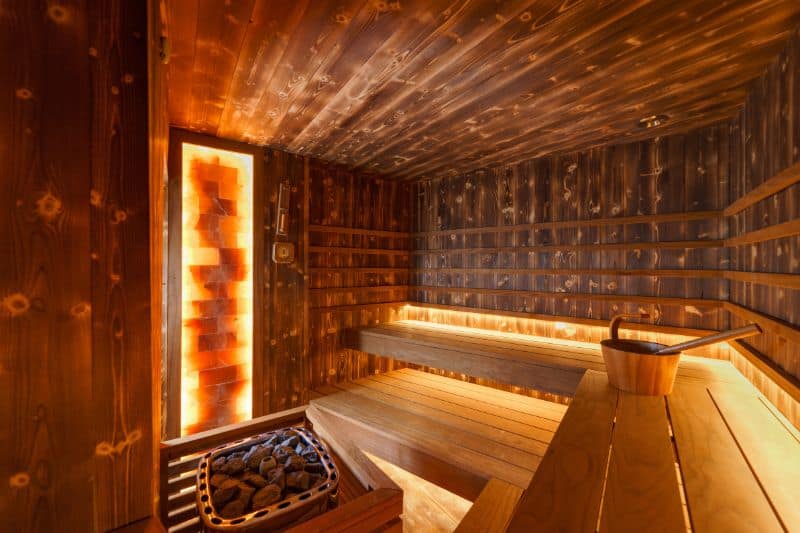
Picture this: Your own private sauna waiting for you after a long day. Not just any sauna, but the perfect one that fits your home and lifestyle like a cozy woolen glove.
Hey! I’m Ashish from Home in Depth, and after spending years studying and researching saunas, I’ve helped hundreds of folks find their perfect match.
Key Takeaways
- Traditional saunas (150-195°F) bring classic steam heat, while infrared saunas (120-150°F) offer gentle, direct warmth. Each needs different space and setup.
- Electric heaters cost less upfront and need minimal maintenance. Wood-fired heaters need more work but can reduce running costs. For infrared, choose between quick-heating ceramic or even-heating carbon panels.
- Cedar and hemlock are top wood choices – they resist moisture and last longer. Avoid cheaper woods that can warp or leak sap.
- Your sauna size should match both your space and how you’ll use it. A 4×4 works for solo sessions; go 5×7 or larger for family use.
- Safety first: look for certified heaters, proper ventilation, and reliable temperature controls
- Get the full picture: installation, maintenance, dealer reputation, and warranty coverage matter
Your timing is perfect – the global sauna market is set to hit $6.8 billion by 2027. Why? Because more people are discovering what Finnish folks have known for centuries – saunas aren’t just a luxury, they’re a game-changer for health and happiness.
From traditional Finnish models with their hot stones and steam to modern infrared cabins – we’ll find your ideal match in this sauna buying guide.
Table of Contents
Types of Saunas: Traditional vs. Infrared
Want the steamy heat of an authentic Finnish sauna or the gentle warmth of infrared rays? Here’s what makes each type special:
Traditional Saunas (150-195°F)
- Classic hot-stone experience with steam
- Intense heat gets you sweating fast
- Perfect for that deep-cleansing feel
- Takes 30-40 minutes to heat up
- Creates a social, spa-like atmosphere
Infrared Saunas (120-150°F)
- Direct heat that warms your body, not the air
- Gentle experience that’s easier to tolerate
- Great for sore muscles and joint pain
- Quick 10-20 minute heat-up time
- Lower electricity costs
Related: Roundup Reviews of The Top Home Infrared Saunas in 2024.
| Feature | Traditional | Infrared |
|---|---|---|
| Heat Feel | Hot and steamy | Warm and direct |
| Heat-up Time | 30-40 minutes | 10-20 minutes |
| Temperature | 150-195°F | 120-150°F |
| Energy Use | Higher | Lower |
| Best For | Intense detox, social sauna time | Muscle relief, longer sessions |
For first-time buyers, I recommend starting with my guide explaining sauna fundamentals.
What Different Sauna Types Can Do For Your Health
Ever noticed that blissed-out feeling after a sauna session? There’s real science behind that glow. Here’s what long-time sauna owners tell me about sauna benefits:
- Your heart gets a gentle workout (blood pressure and circulation improve)
- Sleep becomes deeper (that pre-bedtime sauna ritual works wonders)
- Skin clears up (heat therapy acts like a natural spa)
- Stress melts away (20 minutes of heat = hours of calm)
- Joints move easier (heat loosens stiff spots)
- Breathing improves (steam opens airways)
- Immunity strengthens (fewer colds and sniffles)
- Mental clarity sharpens (heat + relaxation = clear thinking)
- Weight management gets a boost (through increased metabolic rate)
Related: Sauna For Anxiety
Heat Experience Differences
Traditional saunas feel like a hot summer day – intense and steamy. Infrared? More like spring sunshine warming your skin directly. Some folks love that classic steam-room intensity, while others prefer infrared’s gentler touch that goes deep into sore muscles.
My Personal Sauna Story
My first sauna experience changed everything. What started as a quick five-minute try turned into a daily ritual. The stress vanished, sleep improved, and those post-workout aches? Gone.
Picking Your Perfect Match
Traditional saunas (150-195°F) bring that intense, cleansing sweat. Perfect for detox and cardiovascular benefits. Infrared models (120-150°F) penetrate deeper into muscles – ideal for chronic pain and gentle relaxation. Choose based on what matters most to you.
Related: Infrared vs Traditional Saunas
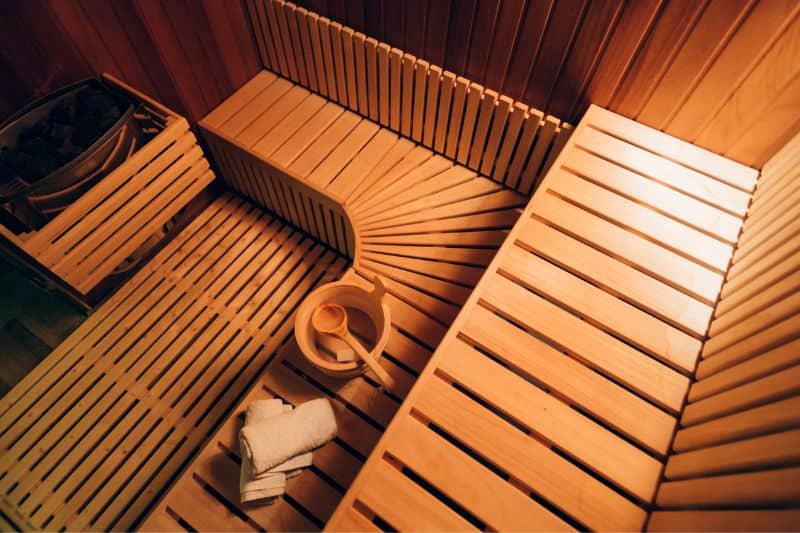
Choosing the Heating Mechanism
Let’s talk about what makes your sauna sizzle. After helping countless sauna owners pick their perfect heater, I’ve learned one thing – the right heat source makes or breaks your sauna experience.
Traditional Sauna Heat Source
“My wood-fired sauna takes more work, but that crackling sound and gentle heat waves? Pure magic,” says Tom, a sauna owner of 15 years. Meanwhile, Sarah loves her electric unit: “Just press a button and 30 minutes later – perfect heat.“
Explore our expert picks on the Top 5 Wood-Burning Sauna Stoves and the Top 7 Electric Sauna Heaters this year.
| Feature | Electric Heaters | Wood-Fired Heaters |
|---|---|---|
| Operation | Simple flip-switch | Manual wood loading |
| Heat-up Time | 30-40 minutes | 45-60 minutes |
| Installation | Simpler, indoor-friendly | Needs chimney, outdoor setup |
| Upfront Cost | Lower ($500-2000) | Higher ($2000-4000) |
| Running Cost | Higher electricity bills | Lower if wood available |
| Maintenance | Minimal cleaning | Regular ash removal, chimney cleaning |
| Safety Features | Auto shut-off, UL certified | Fire safety measures needed |
| EMF Levels | Varies by model | None |
| Best For | Convenience, indoor use | Authentic experience, outdoor setup |
| Atmosphere | Modern, consistent | Traditional, varying heat waves |
| Humidity Control | Pouring water on stones | Natural from wood burning |
Related: Electric vs Wood Burning Sauna Heaters
Infrared Sauna Heat Source
“I tried both ceramic and carbon heaters before buying,” shares Mike, a gym owner. “Carbon won me over with its even heat – no hot spots during long sessions.“
| Feature | Ceramic Heaters | Carbon Heaters |
|---|---|---|
| Heat-up Time | 10-15 minutes | 15-20 minutes |
| Heat Distribution | Intense, targeted spots | Even, widespread warmth |
| Initial Cost | Lower | 20-30% higher |
| Lifespan | 5-7 years | 10-15 years |
| Energy Efficiency | Good | Excellent |
| Coverage Area | Smaller, focused | Larger surface area |
| EMF Output | Higher | Lower |
| Heat Penetration | 1-2 inches | 2-3 inches |
| Best For | Quick, intense sessions | Long, gentle sessions |
| Replacement Cost | Lower per panel | Higher per panel |
Real-World Usage Tips
Experienced sauna owners recommend:
- Look for UL or ETL certification on any electric heater
- Check your home’s electrical panel – most electric heaters need a dedicated 220V circuit
- Plan wood storage for wood-fired units – you’ll need dry, seasoned wood year-round
- Consider your usage frequency – daily users often prefer electric’s convenience
- Factor in climate – wood-fired units shine in cold regions with cheap wood access
- Test heater placement – good heat circulation needs proper heater positioning
If you’re confused about which sauna heater to buy, our comprehensive list of the Top 11 Sauna Heaters in 2024 might just have your answer.
Pro Maintenance Tips:
- Keep spare parts handy – especially for wood-fired units
- Clean electric elements yearly
- Sweep chimneys every 6 months for wood-fired units
- Check wiring connections annually
- Test safety features monthly
Indoor vs Outdoor Saunas: Choosing the Perfect Location
Where your sauna lives matters as much as what’s inside it.
Indoor saunas shine in convenience – they’re ready whenever you are, rain or shine. Basements and spare rooms make perfect spots, and you won’t need special permits usually. Just make sure you’ve got proper ventilation set up.
Outdoor saunas create a special retreat in your backyard. You’ll have more room to play with size, perfect spots for wood-fired options, and the magic of cool-down sessions under the stars. Remember though – you’ll need to protect it from weather, maybe pour a foundation, and check local building codes first.
Related: Choosing between an indoor and outdoor sauna
Speaking of building codes – here’s a pro tip that’s saved many of my readers headaches: check your local regulations before you buy. Some areas have specific rules about sauna installations, and it’s better to know upfront than face surprises later.
Choosing the right sauna can be overwhelming. Our Dundalk CT Georgian Cabin 6-Person Sauna Review explores why it’s one of the best traditional options available.
Related:
Best Outdoor Sauna Guide
Best Indoor Sauna Guide
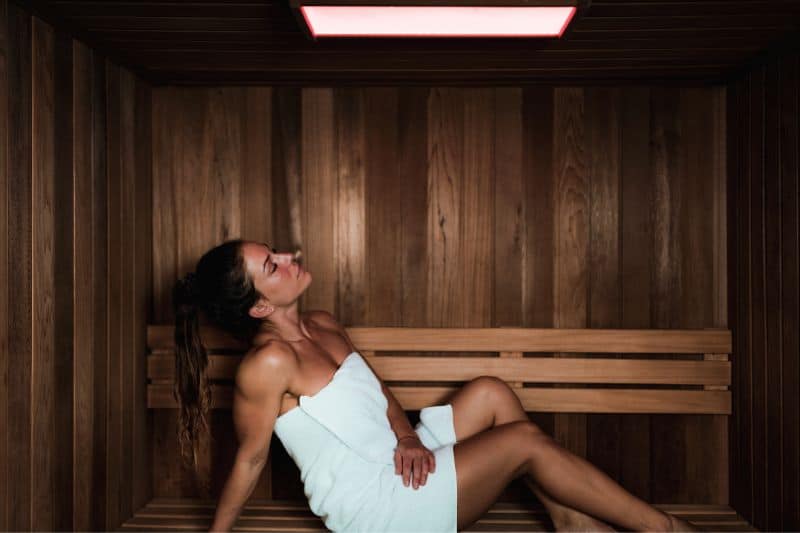
Size Matters: Selecting the Ideal Sauna Size
Let’s talk size – and no, bigger isn’t always better. I’ve seen too many folks regret getting a massive sauna that eats up power (and space) heating empty benches.
Here’s what experienced sauna owners recommend:
- Solo sauna: 4×4 feet (perfect for apartments)
- Couple’s retreat: 5×5 feet (cozy but comfortable)
- Family size: 5×7 feet or larger (room to stretch)
- Party central: 8×8 feet+ (social sauna time)
A good rule of thumb: Plan about 2 feet of bench space per person.
Related: Best 2 Person Saunas of 2024
Remember those bench heights too – you’ll want:
- Lower bench: 18-24 inches high (perfect for feet)
- Upper bench: 36-42 inches high (where the sweet heat is)
- Ceiling height: 7 feet min (room to stand and proper heat circulation)
Evaluating Sauna Features and Accessories
A sauna isn’t just wood and heat. Smart features turn a basic box into your perfect relaxation zone.
Must-Have Features
Temperature controls matter most – look for digital controls that show both heat and time. Double-check that emergency shut-off feature too. You’ll want proper ventilation vents (one low, one high) to keep fresh air flowing.
Smart Extras Worth Getting
Quality sauna owners swear by these add-ons:
- Adjustable lighting (create that perfect mood)
- Ergonomic backrests (your spine will thank you)
- Mobile-friendly controls (start heating before you get home)
- Good thermometer and hygrometer (know your exact conditions)
Related:
Top Sauna Accessories
Top Sauna Thermometers
Skip These Gimmicks
Fancy chromotherapy lights and built-in entertainment systems sound cool but often break down from heat exposure. Keep it simple – your sauna should be a retreat from screens anyway.
Pro tip from veteran sauna owners: Start with quality basics. You can always add features later, but fixing a poorly built foundation? That’s a headache nobody needs.
Deciding on Your Sauna Budget
Let’s talk money – the real numbers behind sauna ownership. Base models start around $3,000, while luxury units can hit $15,000 or more. But the sticker price? That’s just the start.
The Real Cost Picture
Your total investment includes:
- Installation (electrical work, foundation if needed)
- Delivery and assembly
- Permits and inspections (check local requirements)
- Ventilation setup
- Safety features
Running Costs Matter
Electric saunas typically add $10-30 to monthly power bills. Wood-fired models need 2-3 cords of wood yearly. Infrared units usually cost less to run – about $5-15 monthly.
Pro tip: Skimping on quality to save money upfront often costs more down the road. Those bargain heaters that break? Emergency replacements never come cheap.
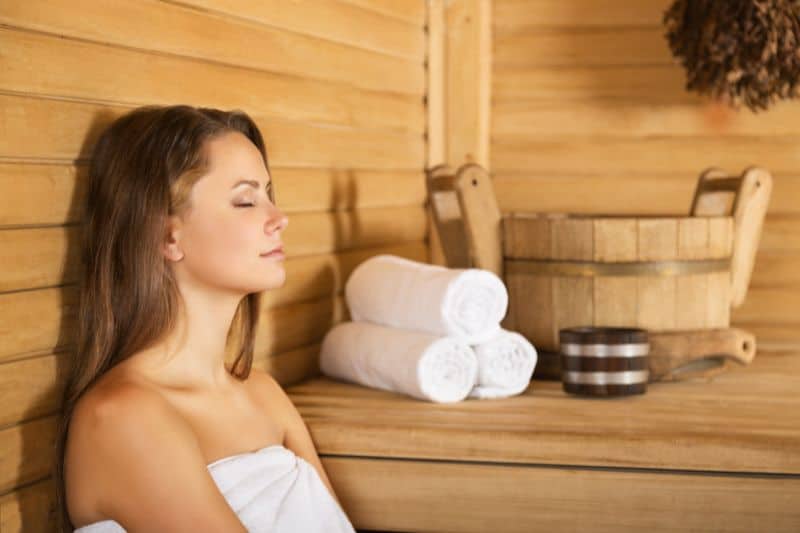
Evaluating Your Space Availability
Got your budget sorted? Let’s find your sauna’s perfect spot. A good location needs more than just empty square footage.
Indoor Placement
Your indoor sauna needs:
- Moisture-resistant flooring
- Proper electrical access
- Fresh air supply
- Space for heat shields
- Room for changing
- Easy access to bathroom
Basements work great, but spare rooms, garages, or even master baths can host your sauna. Just keep water sources nearby.
Related: DIY Indoor Sauna
Outdoor Considerations
Outdoor saunas need extra planning:
- Level, stable ground
- Protection from elements
- Privacy from neighbors
- Path for winter access
- Good drainage
- Power source access
Remember clearance space – you’ll want at least 2 feet around your sauna for proper ventilation and maintenance access. And think about your cool-down spot too. A shaded porch or covered area near the sauna makes post-session relaxation much nicer.
Exploring Sauna Wood Options: What’s Best for Your Sauna?
Cedar stands tall as the classic sauna wood choice, but it’s not your only option. Your wood choice affects both looks and longevity.
Cedar brings that sweet, natural scent and fights off mold like a champ. Western Red Cedar tops many sauna builders’ lists – it handles heat swings without warping and smells amazing year after year. But that quality comes with a price tag.
Nordic White Spruce offers excellent durability at a lower cost. Popular in traditional Finnish saunas, it holds up beautifully against moisture and heat. Plus, its light color brightens your sauna space.
Hemlock makes another solid pick. It resists knots popping out (no surprise hot spots), costs less than cedar, and stays stable in high heat. The neutral scent works great for folks who find cedar too strong.
Woods to avoid? Pine (can ooze sap), regular lumber (chemicals), or anything pressure-treated. Your sauna wood needs to handle heat without releasing nasty stuff into the air.
Related: Best Wood For Sauna
Understanding Sauna Safety Standards and Risks
Safety isn’t exciting, but it keeps your sauna sessions enjoyable for years to come. Let’s tackle the crucial bits.
Heater Safety
Every electric heater needs proper certification – UL in the US or similar standards elsewhere. Look for:
- Auto shut-off features
- Guard rails around hot elements
- Proper wiring rating
- Temperature limiters
- Timer controls
Ventilation Requirements
Good airflow keeps you safe and comfortable. Ensure the following:
- Fresh air intake near floor level
- Exhaust vent up high
- Adjustable vents for control
- Gap under door for air movement
Installation Safety
Proper setup prevents problems. Ensure:
- Correct clearances from walls
- Heat shields where needed
- Moisture barriers in walls
- GFCI protection
- Proper fuse sizing
A quick note about CO detectors – they’re must-haves for wood-fired saunas. Even with perfect ventilation, better safe than sorry.
Related:
Can You Plug Your Sauna Into a Regular Outlet?
Fire Safety and Prevention in Saunas
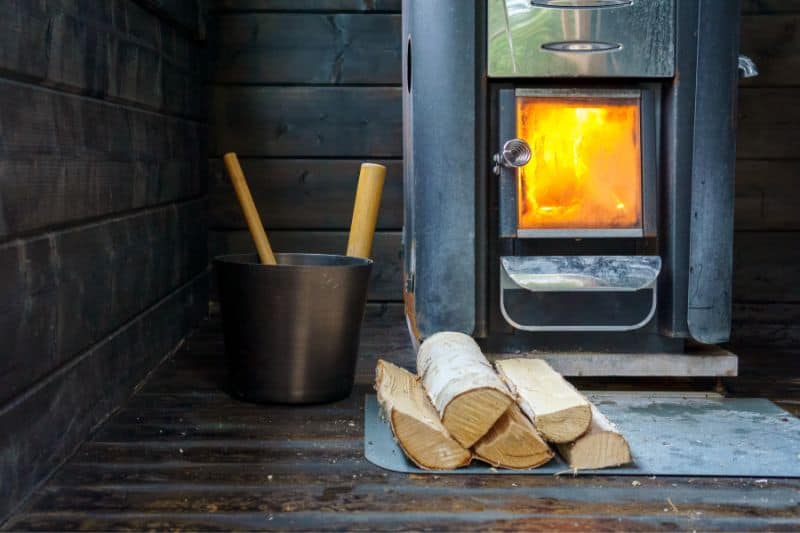
Operational Costs of Running a Sauna
Think beyond the purchase price – let’s crunch some real numbers about running your sauna.
| Running Costs | Traditional Electric | Infrared | Wood-Fired |
|---|---|---|---|
| Monthly Power | $30-40 (6kW heater) | $10-20 | Cost of wood only |
| Heat-up Time | 30-40 mins | 10-20 mins | 45-60 mins |
| Efficiency Rating | Standard | High | Varies with wood type |
| Yearly Maintenance | $50-100 | $25-50 | $150-200 plus wood |
Smart Money-Saving Features:
- Digital controls with auto-shutoff
- Quality insulation (R-13 walls, R-22 ceiling)
- Timer programming
- Proper sizing for your needs
- Adjustable vents for heat control
Pro Tips:
- Run during off-peak hours for lower rates
- Bundle sessions on same days
- Start at lower temps, increase as needed
- Keep door seals tight
- Schedule regular maintenance
To learn more, please read my in-depth article on how much do saunas cost.
Related Article : How much electricity do saunas consume?
Trying Different Sauna Types Before Buying
Never buy a sauna without testing similar models first. Your perfect sauna should feel right from day one.
Smart Testing Strategy
Book sessions in different sauna types:
- Traditional Finnish steam
- Modern infrared
- Wood-fired if possible
- Various sizes
Pay attention to:
- Heat comfort levels
- Steam intensity preferences
- Bench comfort
- Control panel ease
- Ventilation feel
- Room to move
Most quality dealers offer test sessions. Some even credit test fees toward your purchase. Ask about trying the exact model you’re considering – it’s like test-driving a car before buying.
Take notes during each test session. Temperature preferences, comfort levels, and features you loved or hated – these details help nail down your perfect match.
Choosing the Right Sauna Dealer
A great dealer makes all the difference between a smooth setup and endless headaches.
| What to Look For | What to Avoid |
|---|---|
| 5+ years in business | No physical address |
| Written warranties | Pressure sales tactics |
| 24/7 emergency contacts | Unclear warranty terms |
| Local repair network | Poor response times |
| Parts inventory | No installation support |
| Installation guidance | Limited parts stock |
Questions to Ask:
- How long have you been selling saunas?
- Who handles installation?
- What’s your emergency service policy?
- Where do you stock parts?
- Can I talk to recent customers?
- What’s covered under warranty?
Pro Tip: Call their service line with questions. The response tells you everything about their customer support – before you spend a dime.
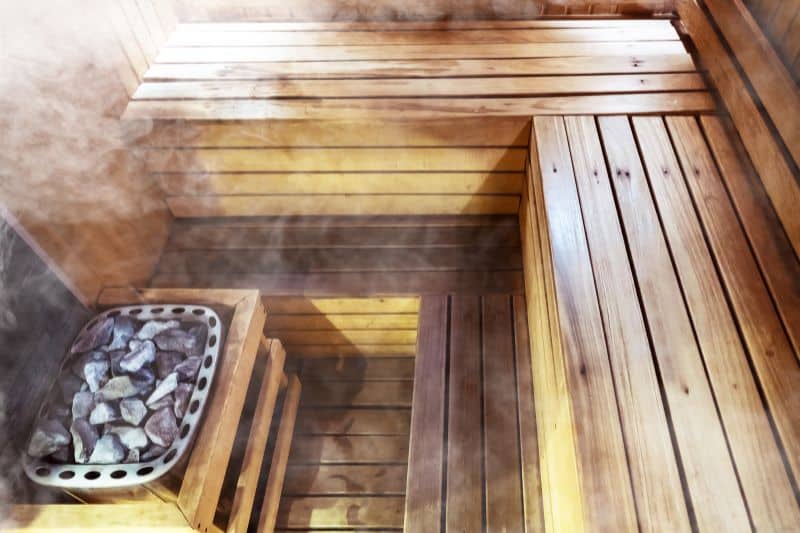
Warranty Coverage and What It Means
A solid warranty protects your investment. But read that fine print carefully – not all warranties offer equal protection.
What Good Coverage Includes:
- Heater elements (3-5 years minimum)
- Control systems (2+ years)
- Wood structure (5+ years)
- Electrical components
- Parts and labor terms
Watch for warranty gaps like:
- Shipping costs for repairs
- Labor coverage limits
- Installation requirements
- Maintenance records needed
- Who handles service calls
Pro Tip: Keep all paperwork, especially installation records. Many warranties need proof of proper installation to stay valid. Take photos during installation too – they might save you headaches later.
Conclusion
Buying a sauna should be fun, not stressful. Buying your perfect sauna boils down to five key choices: type (traditional or infrared), heating method (electric, wood-fired, or infrared panels), size, location, and wood. Match these to your space, budget, and how you’ll use your sauna.
Remember these essentials:
- Get proper installation
- Check warranties carefully
- Test before buying
- Focus on quality components
- Plan for running costs
Ready to start your sauna journey? Take your time, test different models, and soon you’ll be enjoying the perfect home sauna retreat.
FAQs about Sauna Buying Guide
What temperature should a sauna be for beginners?
Beginners should start with temperatures of 140-150°F in traditional saunas or 110-120°F in infrared models. First-time users should limit sessions to 5-10 minutes. Beginners can increase their exposure gradually over time.
What not to do after a sauna?
After-sauna activities should exclude cold showers and intense exercise. Your body needs gradual cooling time. Users should avoid alcohol and heavy meals. People should wait for natural cooling before entering air-conditioned spaces.
Should you drink water in the sauna?
Sauna users should drink water throughout their session. People need 2-4 cups of water per 20-minute session. Users should avoid alcohol and caffeine. Water bottles should accompany every sauna session.
What is the maximum safe time in a sauna?
Maximum sauna times vary by type. Traditional saunas require 15-20 minute limits. Infrared saunas allow 30-45 minute sessions. Users must exit if dizziness occurs. People should wait 30 minutes between sessions.

“Become a Sauna Expert Overnight!”
Grab Your “FREE” Sauna E-book NOW!
Get your hands on the ultimate sauna manual. From history to DIY setups, our free guide has it all.

As a Chartered Accountant turned sauna enthusiast, I bring a unique blend of analytical skills and hands-on experience to the world of heat therapy. With over a decade dedicated to researching and testing sauna products and practices, I’ve developed a deep understanding of this field. A the founder of HomeInDepth.com, I provide reliable, easy-to-understand information on all aspects of saunas. My goal is to guide you through every step of your sauna journey, offering meticulously researched, unbiased advice to help you make informed decisions and create your perfect sauna experience. I’m always happy to hear from sauna lovers like you—feel free to leave questions or share your own tips in the comments below so we can learn together. Contact me on:

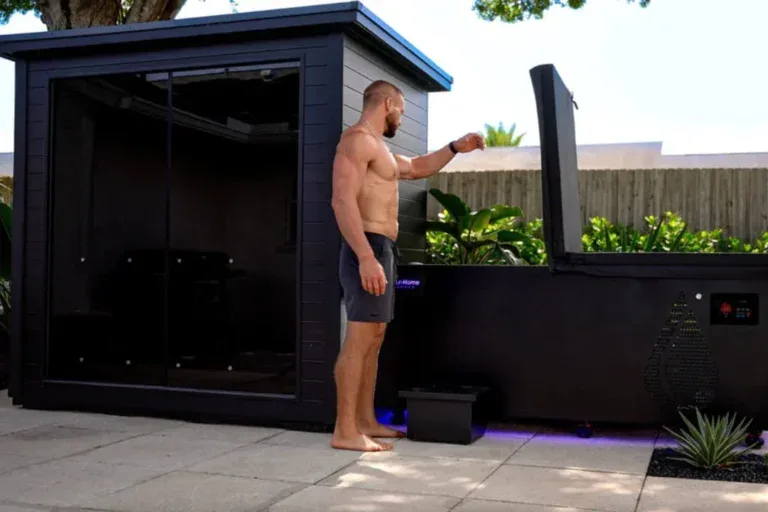

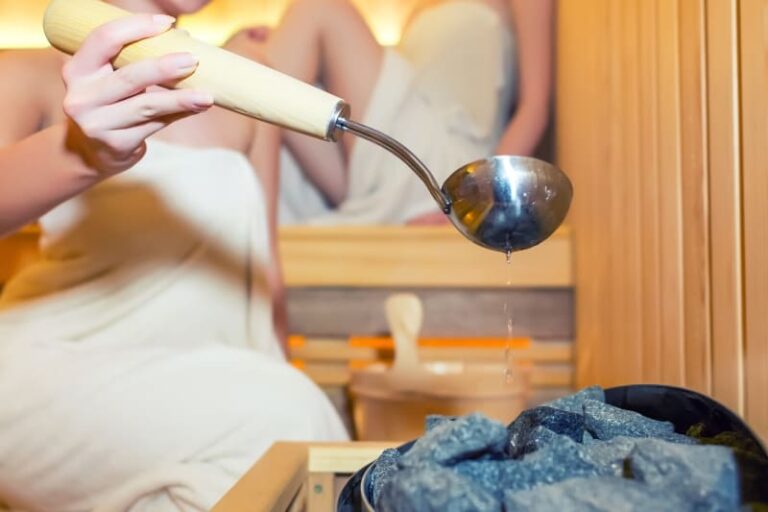
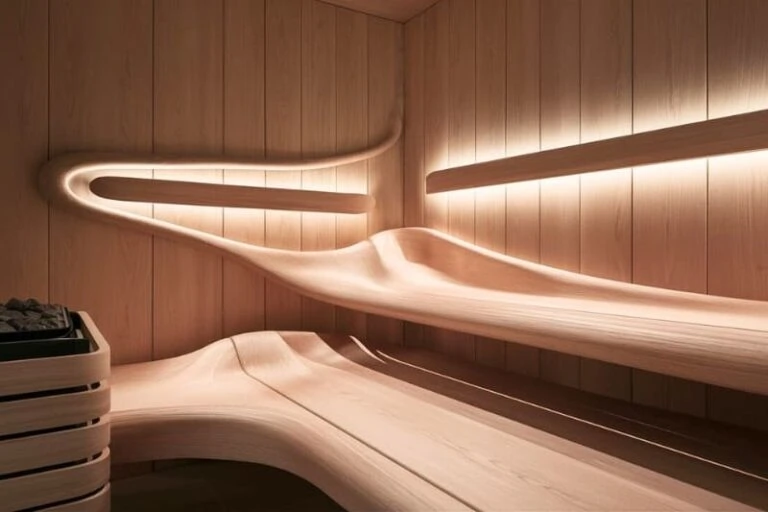

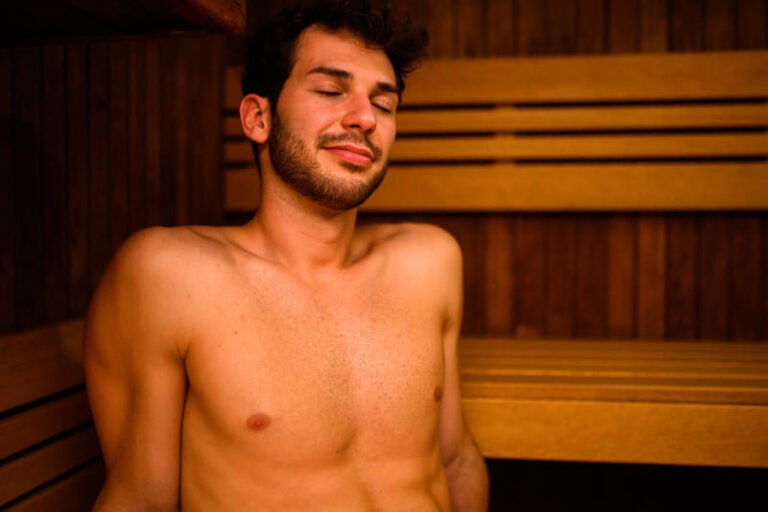
6 Comments